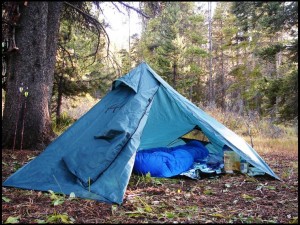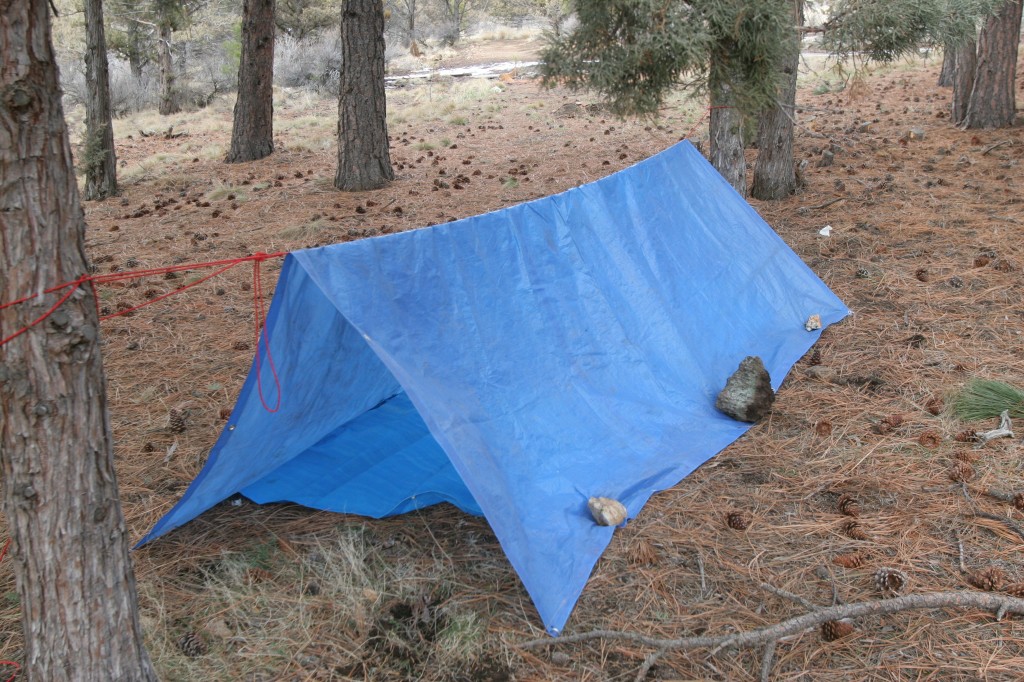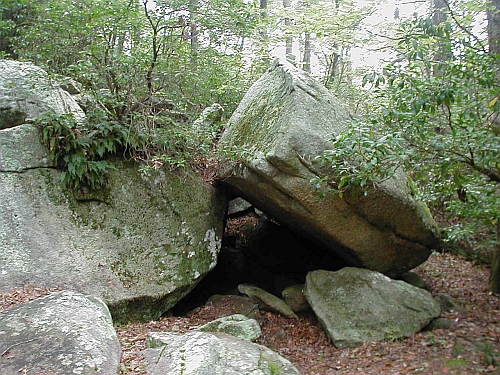Survival School: Finding Shelter

Dispatcher: RC Murphy
 Keeping a well-stocked survival kit isn’t always a possibility given how expensive certain necessary elements can be. For instance, tents and other portable shelters. Sure, you can find cheap tents that’ll do the job, but will they be big enough? Can you carry them and all of your gear? From personal experience, toting around camping gear for one person to last one weekend—with access to food, so no ice chest—is an ordeal. When you’re running from zombies, you’re not going to be able to carry everything and a bulky tent bag. And what happens if your tent is damaged or you’re forced to abandon it during an attack? Below, we’ve listed a few ways you can minimize your packing list and still find cover in a pinch. These are all improvised shelters which take time to set up. Do not put off setting up your camp site until sundown if you plan to use these methods.
Keeping a well-stocked survival kit isn’t always a possibility given how expensive certain necessary elements can be. For instance, tents and other portable shelters. Sure, you can find cheap tents that’ll do the job, but will they be big enough? Can you carry them and all of your gear? From personal experience, toting around camping gear for one person to last one weekend—with access to food, so no ice chest—is an ordeal. When you’re running from zombies, you’re not going to be able to carry everything and a bulky tent bag. And what happens if your tent is damaged or you’re forced to abandon it during an attack? Below, we’ve listed a few ways you can minimize your packing list and still find cover in a pinch. These are all improvised shelters which take time to set up. Do not put off setting up your camp site until sundown if you plan to use these methods.
Tarp designs:
Between two trees – You’ll need: Rope, stakes (or heavy rocks to hold top tarp in place), 2 large tarps. Optional: 3-inch diameter stick long enough to reach between the trees.
How to: String the rope between trees about 3 feet from the ground (or brace the branch in natural Ys formed by the trees). Stake down one edge of the tarp. Drape the tarp over the rope/branch. Stake down the opposite side of the tarp. Fold remaining tarp and lay it on the ground under the first.
Good for: Getting out of the rain. This design will retain minimal heat, since both ends are open to the wind.
Hanging tepee style – You’ll need: Rope or para-cord, 2 large tarps, rocks or stakes.
How to: Find a tree with a branch about 6 feet from the ground. Fold first tarp so you can tie a rope around one edge. Toss the rope over chosen branch and pull until the tarp is almost all the way off the ground, leaving enough slack to secure with stakes or rocks. Tie remaining rope around tree trunk. Pin down the bottom edge of the tarp in a circle, leaving a “door” where the sides meet. Fold remaining tarp and lay on the ground inside the “tepee”.
Good for: Blocking wind, keeping somewhat dry, privacy.
Blanket time – You’ll need: 1 tarp.
How to: In a pinch, drape yourself in the tarp, don’t cover your face, and curl up for the night. It won’t be comfortable, but will retain heat and keep you somewhat dry.
Using what Nature gave us:
Between a rock and a leafy place- You’ll need: a large boulder, numerous long tree branches, leaves, moss, and leafy branches.
How to: Lean the long branches against the boulder (remember: there should be enough space between the branches and rock for you to crawl through) in a row roughly 6 feet long. Cover the long branches with smaller, leafy branches. Cover those with moss and loose dry leaves. You want to cover as much as possible (until no light shines through the inside of the shelter) to retain some heat and provide a barrier from wet weather. A layer of dry leaves inside the lean-to will keep ground moisture and cold from seeping into your sleeping bag or clothes while you rest. A variation of this lean-to can be made by creating a 3-pole brace to lean the long branches against before covering them—two upright, one across the top.
Natural crawlspaces – Keep an eye out for rock formations, fallen trees, etc which provide natural cover, or enough cover you can pile up leafy branches and leaves on top to increase the cover available. Check for animals, first!



